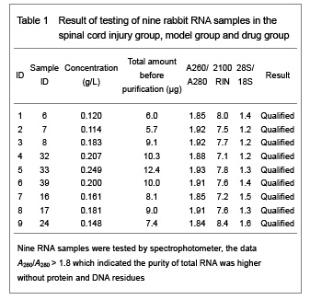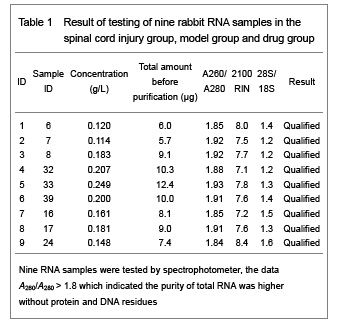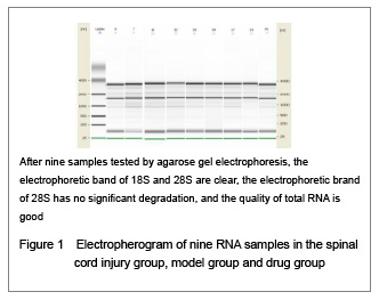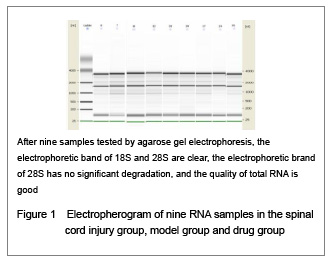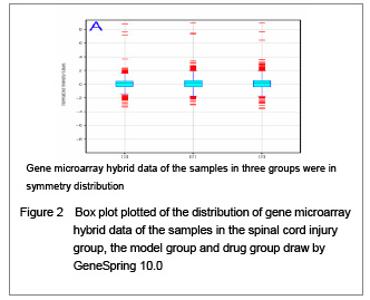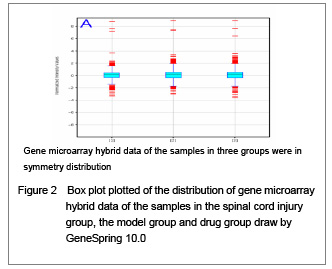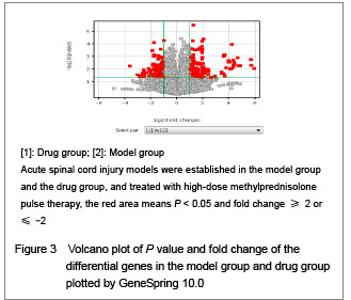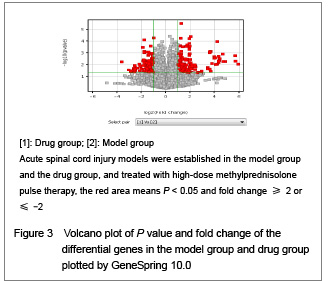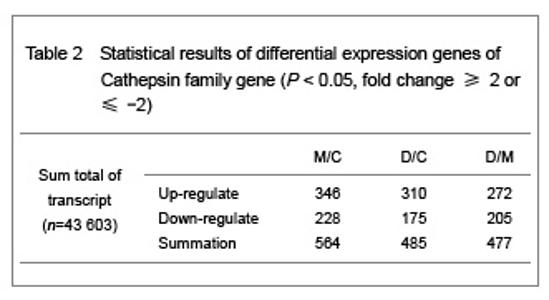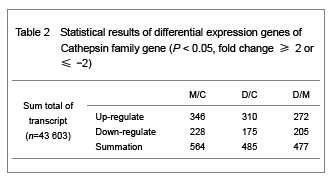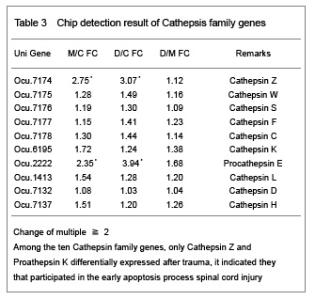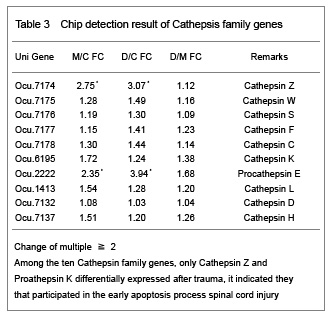| [1] |
Jiang Hongying, Zhu Liang, Yu Xi, Huang Jing, Xiang Xiaona, Lan Zhengyan, He Hongchen.
Effect of platelet-rich plasma on pressure ulcers after spinal cord injury
[J]. Chinese Journal of Tissue Engineering Research, 2021, 25(8): 1149-1153.
|
| [2] |
Geng Qiudong, Ge Haiya, Wang Heming, Li Nan.
Role and mechanism of Guilu Erxianjiao in treatment of osteoarthritis based on network pharmacology
[J]. Chinese Journal of Tissue Engineering Research, 2021, 25(8): 1229-1236.
|
| [3] |
Wan Ran, Shi Xu, Liu Jingsong, Wang Yansong.
Research progress in the treatment of spinal cord injury with mesenchymal stem cell secretome
[J]. Chinese Journal of Tissue Engineering Research, 2021, 25(7): 1088-1095.
|
| [4] |
Kong Desheng, He Jingjing, Feng Baofeng, Guo Ruiyun, Asiamah Ernest Amponsah, Lü Fei, Zhang Shuhan, Zhang Xiaolin, Ma Jun, Cui Huixian.
Efficacy of mesenchymal stem cells in the spinal cord injury of large animal models: a meta-analysis
[J]. Chinese Journal of Tissue Engineering Research, 2021, 25(7): 1142-1148.
|
| [5] |
Pei Lili, Sun Guicai, Wang Di.
Salvianolic acid B inhibits oxidative damage of bone marrow mesenchymal stem cells and promotes differentiation into cardiomyocytes
[J]. Chinese Journal of Tissue Engineering Research, 2021, 25(7): 1032-1036.
|
| [6] |
Li Shibin, Lai Yu, Zhou Yi, Liao Jianzhao, Zhang Xiaoyun, Zhang Xuan.
Pathogenesis of hormonal osteonecrosis of the femoral head and the target effect of related signaling pathways
[J]. Chinese Journal of Tissue Engineering Research, 2021, 25(6): 935-941.
|
| [7] |
Ma Binxiang, He Wanqing, Zhou Guangchao, Guan Yonglin.
Triptolide improves motor dysfunction in rats following spinal cord injury
[J]. Chinese Journal of Tissue Engineering Research, 2021, 25(5): 701-706.
|
| [8] |
Xu Yinqin, Shi Hongmei, Wang Guangyi.
Effects of Tongbi prescription hot compress combined with acupuncture on mRNA expressions of apoptosis-related genes,Caspase-3 and Bcl-2, in degenerative intervertebral discs
[J]. Chinese Journal of Tissue Engineering Research, 2021, 25(5): 713-718.
|
| [9] |
Zhang Wenwen, Jin Songfeng, Zhao Guoliang, Gong Lihong.
Mechanism by which Wenban Decoction reduces homocysteine-induced apoptosis of myocardial microvascular endothelial cells in rats
[J]. Chinese Journal of Tissue Engineering Research, 2021, 25(5): 723-728.
|
| [10] |
Liu Qing, Wan Bijiang.
Effect of acupotomy therapy on the expression of Bcl-2/Bax in synovial tissue of collagen-induced arthritis rats
[J]. Chinese Journal of Tissue Engineering Research, 2021, 25(5): 729-734.
|
| [11] |
Xie Chongxin, Zhang Lei.
Comparison of knee degeneration after anterior cruciate ligament reconstruction with or without remnant preservation
[J]. Chinese Journal of Tissue Engineering Research, 2021, 25(5): 735-740.
|
| [12] |
Zuo Zhenkui, Han Jiarui, Ji Shuling, He Lulu.
Pretreatment with ginkgo biloba extract 50 alleviates radiation-induced acute intestinal injury in mice
[J]. Chinese Journal of Tissue Engineering Research, 2021, 25(23): 3666-3671.
|
| [13] |
Zhang Liang, Ma Xiaoyan, Wang Jiahong.
Regulatory mechanism of Shenshuai Yin on cell apoptosis in the kidney of chronic renal failure rats
[J]. Chinese Journal of Tissue Engineering Research, 2021, 25(23): 3672-3677.
|
| [14] |
Xie Yang, Lü Zhiyu, Zhang Shujiang, Long Ting, Li Zuoxiao.
Effects of recombinant adeno-associated virus mediated nerve growth factor gene transfection on oligodendrocyte apoptosis and myelination in experimental autoimmune encephalomyelitis mice
[J]. Chinese Journal of Tissue Engineering Research, 2021, 25(23): 3678-3683.
|
| [15] |
Yan Peng, Ma Yufei, Cui Jingfu, Hao Shaofei, Liu Jinhui, Guan Chunlei, Wang Xiaoran, Yang Xiaoyu.
Mechanism of anodic block electrical stimulation of sacral nerve root to reconstruct bladder function
[J]. Chinese Journal of Tissue Engineering Research, 2021, 25(23): 3684-3689.
|
